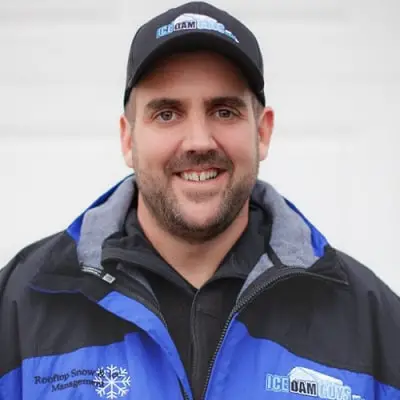Day in the life of
Emergency Vehicle Technician II – Sherman Wright

A typical day involves me working on and driving fire trucks and ambulances for issues big or small.
This line of work as many others requires organization. As a mechanic, an individual must be aware of all tasks at hand. Beginning the day involves paperwork given by management or shop stewards. These articles are called Tickets or Work Orders. You can punch the time in (or log in to) the Tickets will detail the concerns or complaints from a customer on the vehicle. It is the duty of the supervisor to assess which task takes priority but the responsibility of the mechanic to carefully diagnose and perform repairs. You should be prepared to read carefully each line and verify it in a reasonable time frame. This is per vehicle.

Underneath a firetruck inspecting for safety
Once diagnosing is completed, you should report back to supervision or the shop advisor what will be required to complete repairs. Most mechanics will produce labor times which are then converted to a price along with the parts listing for the customer to be informed. Occasionally there is a delay in response from the customer. If the vehicle is not immobile, it can be parked and the next vehicle can be pulled in and inspected.
Depending on the type of repairs you will be assigned and the individual, the work day can be light or heavy. I previously said that the day requires organization. This is applied to cleaning the workspace, tools between jobs and repairs, the paperwork filing (including keeping up with typed diagnoses and repairs), and the apparel with safety equipment. In each vehicle, car porters (people that move vehicles for the businesses) place seat and foot protective covers in the front seats. It is the responsibility of the mechanic to ensure the cleanliness is maintained while performing repairs. Transparency is a trait that is also required throughout the day. Management will want to know how long a job will take so it will eventually be the mechanic’s duty to inform of the amount of time in an estimate-like fashion.
After repairs, test drives are part of the job. You will have to be comfortable driving the vehicle safely and responsibly to confirm the complaints/issues are no longer present. Once driven and confirmed, the vehicle can be parked and keys along with physical paperwork can be given to the service advisor. Clean up can again be performed and the next job can be tackled.

Behind the scenes cleaning up
In depth with the work severity on the body, one should definitely be dressed properly. Most shops will enforce safety at its best but the individual should always double-check any aspect of safety with the job overall. This will include making sure you are covering most of your body to protect from chemicals, masked up for fume protection, eye protection so keep your vision intact, a hard hat if applicable (under a vehicle), and steel toe boots (not low collar shoes) that protect your feet and ankles.
In a day, you need to make sure your communication skills are on par. If you need help or even have a suggestion to complete a task, you should not hesitate. Many establishments are just like being on a team. Everyone shares the same goal of repairing vehicles and being paid. As a team, more can be achieved. Finishing out a day, making sure your tools are all accounted for and cleaned is part of your job. You can lock up your tool box, punch the time card (or log out) and head home, knowing that you made a great impact as a mechanic.
Pros
The positive aspects are that I have great job security, the amazing experience driving a big red fire truck, and the compensation for this position is great. The fleet is always being used/ needed as will the maintenance for them so staff to drive and complete repairs is required throughout the year. The compensation is great because you often get paid to be at work, overtime, emergency pay during crises and inclement weather. Often in these instances, food and shelter is provided to help save your spending.
Being able to drive the trucks is amazing, thanks to the training the department offers to obtain a CDL (commercial drivers license). This means that even if you were to find work outside of the fleet, you can drive a tractor-trailer on the road with additional endorsements.
Lastly is the experience. If you can handle this line of work, the smaller scale is a breeze and you can have a vast idea of how to diagnose and repair more.
Cons
The negative aspect is that this line of work is considered heavy-duty and is hard on the body most times. The parts that make up a big truck are a bigger scale than the typical automobiles that we drive. More than likely at the end of a day, one can carry the scent of diesel exhaust fumes on and around their body.
Another thing to consider is the chain of command. You are very close with a field firefighter and are considered a subordinate to every chief you encounter. I came from the compact car side of the field with General Motors, working on a lot of Cadillac luxury and sports vehicles. With that in mind, one can miss the lighter work despite having plenty of equipment to execute heavy-duty tasks. Ending the day with exhaust exposure can make you more tired than usual. Although I enjoyed this position with the Fire Department, it is much to consider along with this great job.
Advice to aspiring Emergency Vehicle Technicians
Great tips and advice I have is short but very impactful. Safety is a must everyday. There are many risks of injury but just as many ways of preventing them all. Stay on top of educating yourself on how to not get hurt on the job.
Remain as ambitious as you can every day in this field. You should know that you are definitely appreciated and wanted as you in a sense are a hero. Be proud that you are the reason vehicles are still on the road safely.
Remain humble also. We all need to always be willing to learn new things or ways of approaching tasks at hand. There is always training we can get and certifications to earn through quarterly tests. This can help us be more successful to one day run our own shops.
Exercise patience with the vehicles and issues. While under a time constraint or having an expectancy to rush, do not rush. This is how so many errors occur that have often amplified the issues. Take your time but do not stop working or trying to find solutions. Certifications are a bonus. Most places will pay you additionally having what are required and some that are not. A bonus always sounds great aside from the standard salary. This line of work is extremely lucrative.







